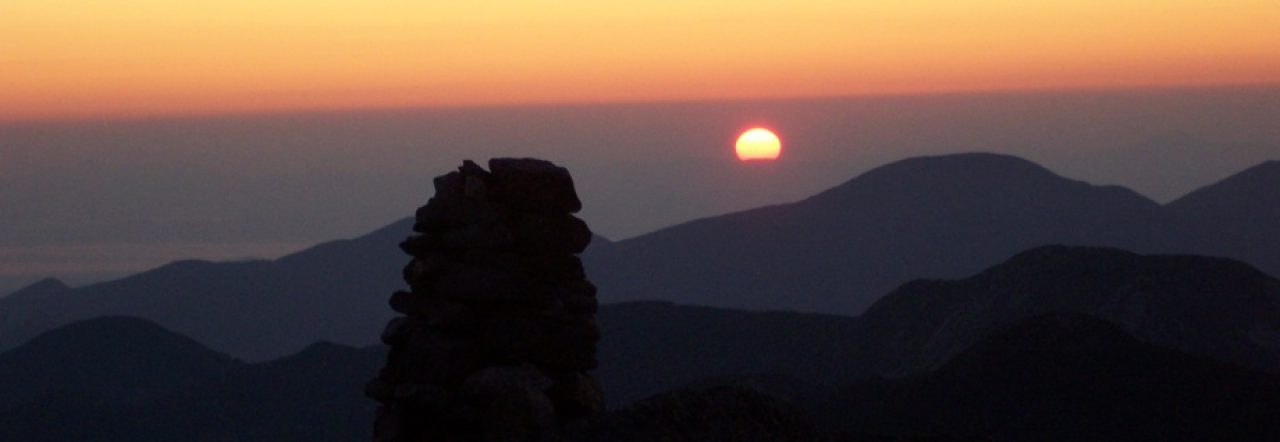
Since I first learned about Buddhism in high school, I’ve been interested in it. I still remember filling out answers to the Four Noble Truths on quizzes in the front of my ninth grade class, alongside sanskrit terms.
Since then, I’ve come a long way.
An independent study in Buddhist philosophy, numerous books, a few meditation retreats, and a daily meditation practice that lasted a few years have all increased my awareness in Buddhism, especially Zen.
But two winters ago, my interest culminated in a three day retreat at a Zen monastery in the Catskills. I still recall the final day of the retreat. After the exhausting stints of 5 a.m. zazen meditation and work projects–where I silently cracked over a hundred eggs–we concluded with a koan and a dharma talk by the sensei. The koan was about the diamond sutra, a central text in Mahayana Buddhism, called “diamond” because a true understanding allows one to cut through illusion and ignorance like a diamond.
The sensei brought up the ending of the sutra itself:
“So I say to you –
This is how to contemplate our conditioned existence in this fleeting world:”
“Like a tiny drop of dew, or a bubble floating in a stream;
Like a flash of lightning in a summer cloud,
Or a flickering lamp, an illusion, a phantom, or a dream.”
“So is all conditioned existence to be seen.”
Thus spoke Buddha.
Building on the Buddhist notion of impermanence–that life contains unceasing flux and change–the sensei stressed our need to “leave no footprints” as we moved through life, negotiating the tricky balance of “equanimity,” a peaceful abiding between aversion and desire that does not fall into indifference. Life is indeed brief. It is full of change and interdependence. Like a dream, things come and go.
Sitting in zazen position, legs folded and “heart open,” I felt a change. Buddhism traditionally has different levels of understanding, ranging from the merely intellectual to the silent but sure understanding of an Enlightened one. Somewhere between lies a heart understanding, where one truly “feels” a new insight that cannot fit into words.
In the midst of the dharma talk, I felt that insight.
Since then, life has gone on. I still recall that moment and the people I met during my short stay: an archaeologist who struggled with suicide before he came, a mother recovering from the untimely death of her oldest son, a banker from New York dissatisfied with his job, and an aging poetry teacher looking for a new inspiration. But as one Jack Kornfield book puts it, after the ecstasy, one always has the laundry.
I haven’t been doing my laundry.
As the sensei said, Zen is not a concept, it’s a way of life. Or as a koan puts it, “Everyday life is the path.” Well, I have not been living a very Zen-like life. Like most people, I’m lost to the humdrum concerns and petty business of the daily grind. As Heidegger might put it, I’m “absorbed” in the “everyday.” And I can’t detach.
I feel the clock like a metronome tuned to presto, driving me from one task to the next in a neatly slotted day divided into work and distraction. Now and then, I break away, but I don’t have a spiritual practice. Nothing regular.
So I may be busy, even “productive,” but as Sogyal Rinpoche notes in the Tibetan Book of Living and Dying, being busy can be another form of laziness. It prevents us from facing the deeper challenges of existence, like sickness, old age, and death.
And here lies the problem: our contemporary world is geared towards this type of “laziness,” if you wish to call it that. It’s geared toward making us forget deep existential concerns. It lets us subsist on a sweet, shallow optimism, the sort that “Facebook Quote Buddha” would approve of. And for many outside the sphere of prosperity, few meaningful outlets exist, and the hard reality of poverty hurts.
Zen in particular opposes much of contemporary life. With its emphasis on easy-going lightness, resilient awareness, focus, and spontaneous intimacy with action, it doesn’t fit the multi-tasking or rushed, deadline-driven productivity that constitutes most of our everyday life. Zen is not a life of quick fixes or brute force. It requires hard, persistent work, and as anyone who has read Zen and the Art of Archery knows, it takes time and patience to endure. Adding to the difficulty, Zen abounds in seemingly meaningless, unintelligible paradoxes and esoteric teachings that ultimately end in a Sisyphus-like struggle toward a vague ideal of “enlightenment.”
So, is it worth it?
It’s hard to say. And “worth it” may not be the best criteria to judge. Instead, as with the Buddha himself, the turn towards Zen may best arise out of dissatisfaction, the pained realization at the human condition and a longing to face it. Slipping into distraction and productivity may be enough for some–even most–but for many, it’s not. For many, something doesn’t feel right. Something is missing. And somehow, it feels like there should be so much more.
And this is where Buddhism, including Zen, begins.
The First Noble Truth revolves around “dukkha,” a versatile word that means both “suffering” in its basic sense and also this feeling of dissatisfaction. And for some, the path of Zen may be the most effective way to overcome this and find a meaningful existence.
With this in mind, I hope to reintegrate more Zen in my own life. Come what may, I still feel it will be fruitful. I hope to add an occasional update now and then.

Great post! Thanks for sharing!
Thanks. And thanks for stopping by!
Pingback: Zen | Earthpages.ca